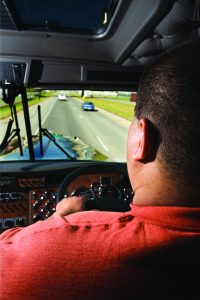Second, generally, only to people costs, a fleet of vehicles is often one of the biggest operating costs for any business. That’s when things run smoothly. Add inefficiencies and lost productivity from a vehicle being stuck in traffic, or the extra expenses and possible reputational damage when one of the vehicles is involved in an accident or incident, and costs can skyrocket.
To compound these challenges, poorly maintained infrastructure, inadequately marked roads, human error and increasing levels of crime contribute toward a higher risk of road incidents compromising the safety and efficiency of vehicles and drivers. However, the latest technological advancements can help.
Video telematics represents a category of mobile-asset camera solutions designed to give fleet operators visibility into fleets and drivers, including events involving vehicles, such as near-misses and crashes, through captured video footage.
In contrast to traditional telematics solutions, which collect and report numerical sensor data generated by a connected vehicle, such as location, heading, speed, braking, and impact, video is more holistic as it can go beyond the vehicle to gather information on the environment itself, including other vehicles and assets in the vicinity as well as road and weather conditions. This information provides fleet operators with the crucial element of context or what we deem “situational intelligence” from the recorded footage, enabling them to understand and diagnose why a driver action or vehicle event occurred, not simply that it occurred.

These solutions can record forward or road, and rear or driver facing activity, among other potential camera views, either continuously upon vehicle activation or in smaller, curated segments when initiated autonomously by a triggering event. The footage, accessible through a wireless network with a smartphone, tablet, or computer-based application, has many uses, such as post-incident forensics to assign fault or exonerate a driver, safety improvement by fostering desired driver behaviours with video review and coaching, and compliance with regulations such as seat belt and hands-free rules.
Tracker’s artificial intelligence-enabled dashcams incorporate software on the device to automatically record video footage before and after an event based on pre-configured capture triggers, and forward real-time alerts to fleet managers with these segments of footage. In the event of an accident, the context provided by the captured footage will enable fleet managers to determine the circumstances leading up to, during and after the incident.
Reviewing this footage will enable a more factual claims process and reduce fraudulent or invalid claims, including possibly exonerating a fleet driver from blame. For example, if a truck crashes into the back of a car, liability is immediately on the truck. However, with the intelligence provided through the footage, it could be determined that the car driver may have been driving aggressively, swerved and came to an abrupt stop in front of the truck for no obvious safety reason.
Also, a major contributor to risk is drivers and their performance as well as behaviour. Driver fatigue, distraction and negligence contributes to accidents and video telematics can mitigate some of this risk.
Tracker’s artificial intelligence dashcams provide immediate improved safety for drivers by monitoring driver attentiveness through facial recognition and alerting the driver in real-time through a speaker, in response to triggers like drowsiness, distraction, speeding, safety belt usage and mobile phone usage. This helps drivers stay alert on the road and reduces accidents by avoiding an event that could lead to a potential incident.

Furthermore, the dashcams upload the trigger event information to a secure online cloud-based portal and provide fleet managers with real-time alerts, supported by video footage. This allows for early detection of bad driving habits and associated risks, and steps can be taken to engage in proactive and targeted driver coaching. Video footage can be paired with constructive feedback to correct unwanted behaviours affecting safety.
Driver and fleet safety is further enhanced by facial recognition on the edge coupled with a live look-in service. This enables fleet managers to have visual confirmation of the driver of a vehicle. In the event an unknown driver enters the vehicle, the functionality will trigger an alert to notify the control centre of the unauthorised driver. The control centre can then look in on the activity taking place in the cabin and take appropriate action, potentially preventing the loss of the vehicle and cargo.
For fleets requiring continuous high-definition recording for security purposes, such as public transport, the Tracker artificial intelligence dashcams offer an onboard digital video recorder (DVR) that can record up to 1,000 hours of fleet and passenger footage with up to eight cameras. This solution is more static and doesn’t require the same artificial intelligence software of the primary offering.
Tracker’s artificial intelligence dashcam offering also leverages edge computing, processing the captured data and video locally on the device to save time and transmission costs, which is currently uncommon in the industry. There is also the option of integrated hardware and software peripherals, such as an alcohol monitoring solution, to create additional value for customers.
“The dynamic landscape of transportation demands innovative solutions, and video telematics stands at the forefront, reshaping how businesses navigate the challenges associated with fleet operations. As technology continues to evolve, the potential for further advancements in video telematics promises even greater strides in ensuring the safety, efficiency, and overall success of fleet management for businesses across various industries,” says Kobus Visagie, Executive: Business Solutions at Tracker South Africa.











